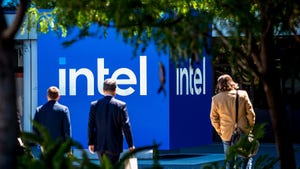Cloud Giants Disagree on the Future of Corporate Data CentersCloud Giants Disagree on the Future of Corporate Data Centers
Google, Microsoft paint contrasting pictures of enterprise data centers’ relationship with cloud

We heard two very different perspectives on the future of on-premise enterprise data centers from top executives on this week’s earnings calls by two of the world’s largest cloud providers.
Microsoft, which has a huge – and growing – on-premise data center software business in addition to a quickly growing cloud one, is continuing to pursue a hybrid strategy, pushing the idea that companies will want to continue using their internal data centers while augmenting them with cloud services.
Alphabet subsidiary Google, which never had the need for an on-premise software business, is playing up wholesale shift of enterprise workloads from corporate data centers to its cloud. Here’s Alphabet CEO Sundar Pichai on the company’s earnings call Thursday:
“Over the last several months, we have noticed a change in the types of conversations that Diane (Greene, head of Google’s cloud business) and her team are having with customers. Increasingly, we are being asked to partner for mission-critical projects and full migrations, moving data from on-prem data centers to the cloud. We are seeing a meaningful shift, and this momentum is resulting in a fast-growing business.”
Microsoft’s server product revenue grew 7 percent in the first calendar quarter (or third quarter of Microsoft’s fiscal 2017), indicating that its hybrid play is about more than protecting a legacy business.
See also: Can Google Lure more Enterprises Inside Its Data Centers?
The Cloud’s Edge
The concept of on-premise infrastructure for Microsoft has evolved beyond just core enterprise data centers. It’s that, plus edge nodes for processing data generated by the Internet of Things, autonomous vehicles, retail stores and other sources of data. The company is building its next generation of on-premise data center software to bring artificial intelligence (in the form of neural networks) to customers’ edge nodes, so they can analyze and make decisions on the spot, while being part of a distributed infrastructure, which also includes the cloud and core enterprise data centers.
Microsoft CEO Satya Nadella on Thursday’s earnings call:
“Right when everyone's talking about the cloud, the most interesting part is the edge of the cloud. Whether it's IoT, whether it's the auto industry, whether it's what's happening in retail, essentially compute is going where the data gets generated, and increasingly data is getting generated at the volumes in which it's drawing compute to it, which is the edge.”
The strategy rests on two key on-prem products: Azure Stack and SQL Server.
Azure Stack is the hardware and software appliance designed to act as a private extension of the public Azure cloud in corporate data centers and as edge nodes of this hybrid network. Following several instances of postponing its release, Microsoft’s latest expected general availability launch date is sometime around mid-2017.
SQL Server 2017, expected this fall, is designed to run across customers’ own data centers, both core and edge, and their public cloud resources. It will support both Windows and Linux, as well as R, Python, and other programming languages widely used for machine learning and big data analytics.
Here’s Nadella again:
“The innovative work we're doing is what I would characterize as the future of true distributed computing, which is it will remain distributed. And that's what we are building towards.”
Google and Microsoft remain far behind Amazon in terms of cloud revenue. However, virtually all major contenders for enterprise cloud market share, including Google, Microsoft, IBM, Oracle, and Alibaba, reported faster cloud revenue growth than Amazon’s. More on that here: Despite Growing Faster Than AWS, Top Cloud Contenders Still Far Behind
What’s Amazon’s Take?
Amazon Web Services acknowledged the importance of on-premise data center infrastructure in a big way last year by striking a partnership with Dell Technologies-controlled VMware, whose server virtualization software is ubiquitous in corporate data centers.
VMware’s software will be sold as cloud services on top of AWS, at which point the companies promise seamless integration between those services and customers’ on-premise VMware environments.
Read more about:
Google AlphabetAbout the Author
You May Also Like







